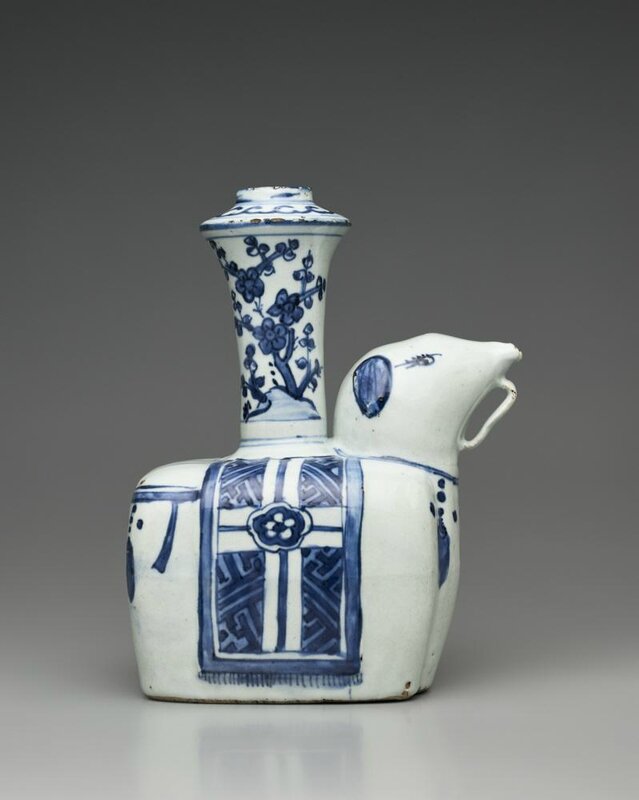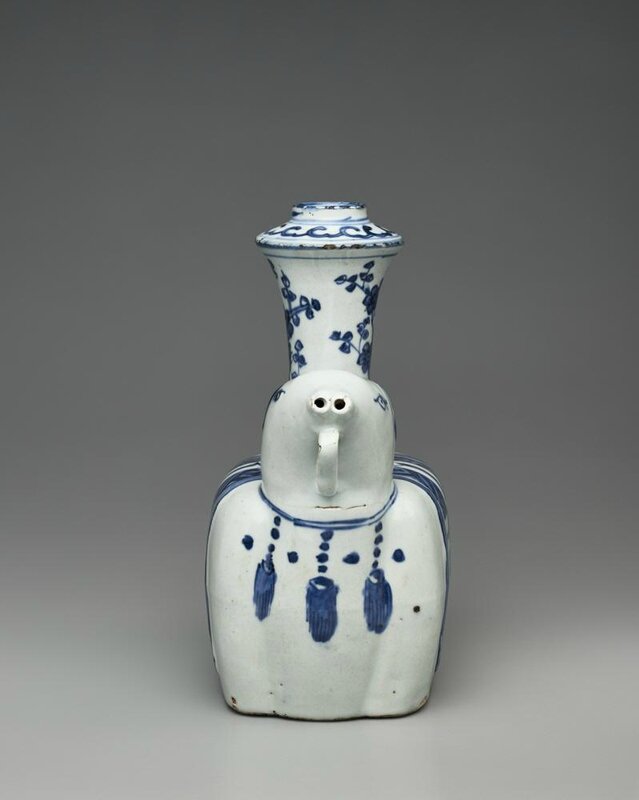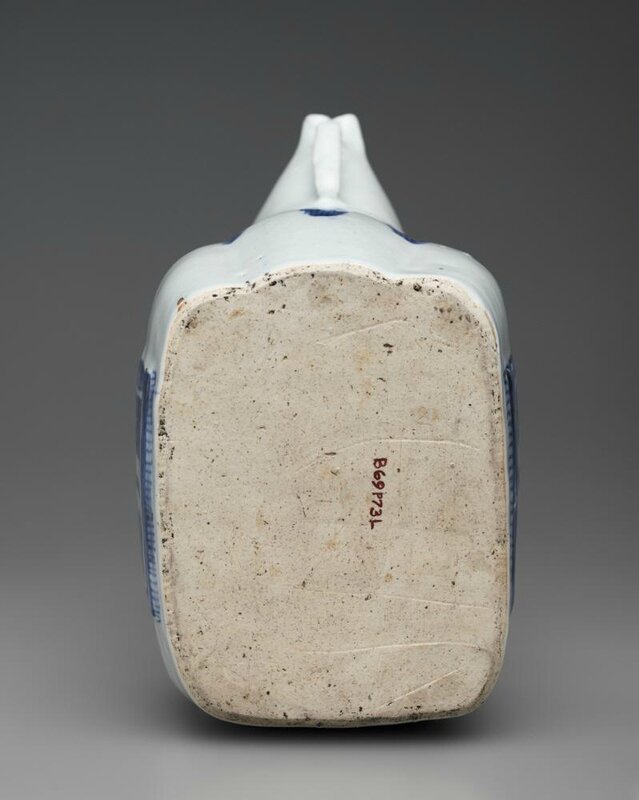18 décembre 2016
Kendi in the shape of an elephant, Southern China, approx. 1550-1620, Ming dynasty (1368-1644)








Kendi in the shape of an elephant, Southern China, approx. 1550-1620, Ming dynasty (1368-1644). Porcelain with underglaze decoration. H. 9 1/8 in x W. 4 1/2 in x D. 7 in, H. 22.9 cm x W. 11.4 cm x D. 17.8 cm. Gift of Roy Leventritt, B69P73L © 2016 Asian Art Museum Chong-Moon Lee Center for Asian Art and Culture
Kundika and Kendi
The kundika, as it is called in the classical language of northern India, is a type of vessel made in a variety of materials and found in many parts of Asia. The defining characteristic of these vessels is that they have a mouth and a spout but no separate handle.
The kendi (a Malay/Indonesian term) is a variation of the kundika; usually of rather squat proportions and made of ceramic, kendi were widely used in Southeast Asia. The demand for these vessels in Indonesia was so great that they were produced in China, Japan, Thailand, and Vietnam and exported to Indonesia.
Publicité
Publicité
Commentaires

/https%3A%2F%2Fprofilepics.canalblog.com%2Fprofilepics%2F1%2F0%2F100183.jpg)
/https%3A%2F%2Fstorage.canalblog.com%2F03%2F02%2F119589%2F96711876_o.jpg)
/https%3A%2F%2Fstorage.canalblog.com%2F11%2F31%2F119589%2F94773502_o.jpg)
/https%3A%2F%2Fstorage.canalblog.com%2F20%2F83%2F119589%2F94772815_o.jpg)
/https%3A%2F%2Fstorage.canalblog.com%2F26%2F72%2F119589%2F75604929_o.jpg)
/https%3A%2F%2Fstorage.canalblog.com%2F59%2F60%2F119589%2F26458628_o.jpg)


/image%2F1371349%2F20240426%2Fob_9bd94f_440340918-1658263111610368-58180761217.jpg)
/image%2F1371349%2F20240426%2Fob_844371_440162278-1658267648276581-39734064969.jpg)
/image%2F1371349%2F20240425%2Fob_78c699_440320998-1657454638357882-17494889713.jpg)
/image%2F1371349%2F20240421%2Fob_1dddd2_438878301-1654314112005268-81048289869.jpg)